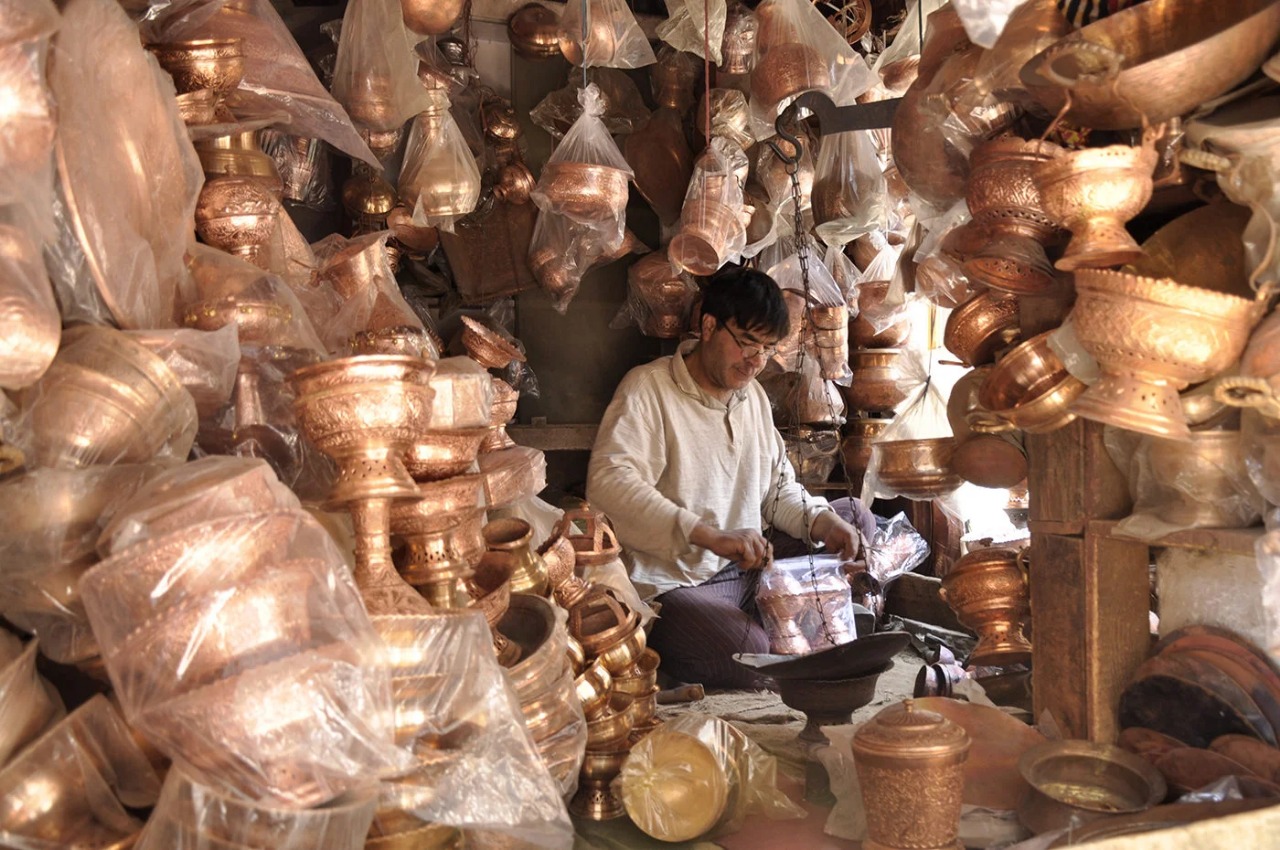In the heart of Srinagar’s Zaina Kadal, the rhythmic clang of chisels against copper echoes a story of survival, memory, and resistance. As mass-produced imitations flood markets across India, Kashmir’s traditional coppersmiths are holding fast to centuries-old techniques, refusing shortcuts and preserving a craft that is as spiritual as it is functional.
Key Highlights from the Ground
- Kashmiri copperware, known for its intricate naqashi work, faces existential threats from machine-made imitations
- Artisans like Mushtaq Ahmed continue to handcraft copper pieces using ancestral methods
- Fake “Kashmir Handicraft” labels are misleading buyers and eroding market trust
- Apprenticeships are dwindling as younger generations opt out of the trade
- Despite challenges, copper remains central to Kashmiri rituals, health beliefs, and cultural identity
The Flame-Born Craft: A Legacy Etched in Metal
Mushtaq Ahmed, a third-generation coppersmith, still works above the same shop he was born in. His hands bear scars from decades of carving vines, prayers, and memories into copper bowls, samovars, and tasht-naris. These vessels once held food, water, and ceremony in every Kashmiri home. Today, they hold history.
The naqashi technique — tapping designs into copper by hand — is slow, deliberate, and deeply personal. Each flaw is a fingerprint, each swirl a story. Mushtaq insists that real copperware must feel alive: heavy, imperfect, and soulful.
The Imitation Crisis: Speed vs. Soul
Markets from Lal Chowk to Mumbai are now flooded with factory-stamped copperware, often produced in Moradabad. These pieces mimic Kashmiri designs but lack depth and authenticity. Some even carry forged labels claiming to be handmade in Kashmir.
This surge of imitation has disrupted the traditional ecosystem. Buyers, unaware of the difference or driven by lower prices, are choosing mass-produced items. As a result, fewer artisans remain, and fewer young people are entering the trade.
Cultural Weight: Copper in Kashmiri Life
Copper is more than craft in Kashmir — it’s ritual. Families still gather around a trami to eat Wazwan, the traditional feast. Samovars hiss out noon chai in winter. Copper bowls cradle water and memory. Even in death, the tasht-nari is used to wash the deceased.
In rural areas, copper vessels are still part of wedding dowries, wrapped in wool and passed down like heirlooms. Elders insist on drinking water from copper cups, citing its health benefits — purification, digestion, and energy balance.
The Fight to Preserve: Holding Fire Against the Machine
Despite the odds, some families continue to resist the tide. Workshops remain open, apprentices still sit beside their elders, and the fire still burns. Mushtaq refuses to use machines. He believes the metal knows the difference.
But the chain is fragile. Without market support and buyer awareness, the craft risks fading into memory. The government has pledged action against fake labeling, but enforcement remains inconsistent.
Conclusion: A Call to Conscience
Kashmir’s copperware is not just art — it’s a living archive. Each piece carries the weight of tradition, the warmth of fire, and the resilience of a people who refuse to let their heritage be hollowed out by speed and shine.
As buyers, tourists, and citizens, the choice is ours: to value the real, the slow, and the soulful — or to let imitation erase authenticity.
Source: Kashmir Observer

